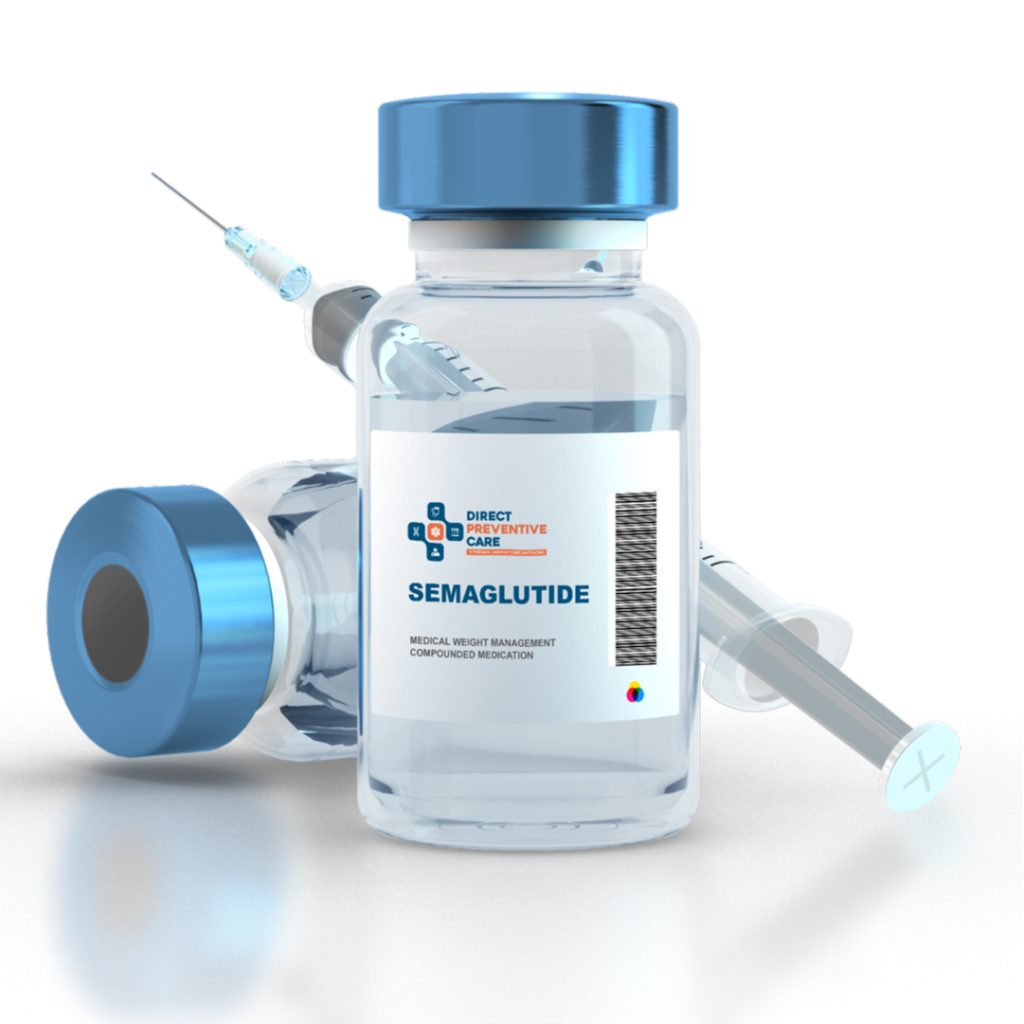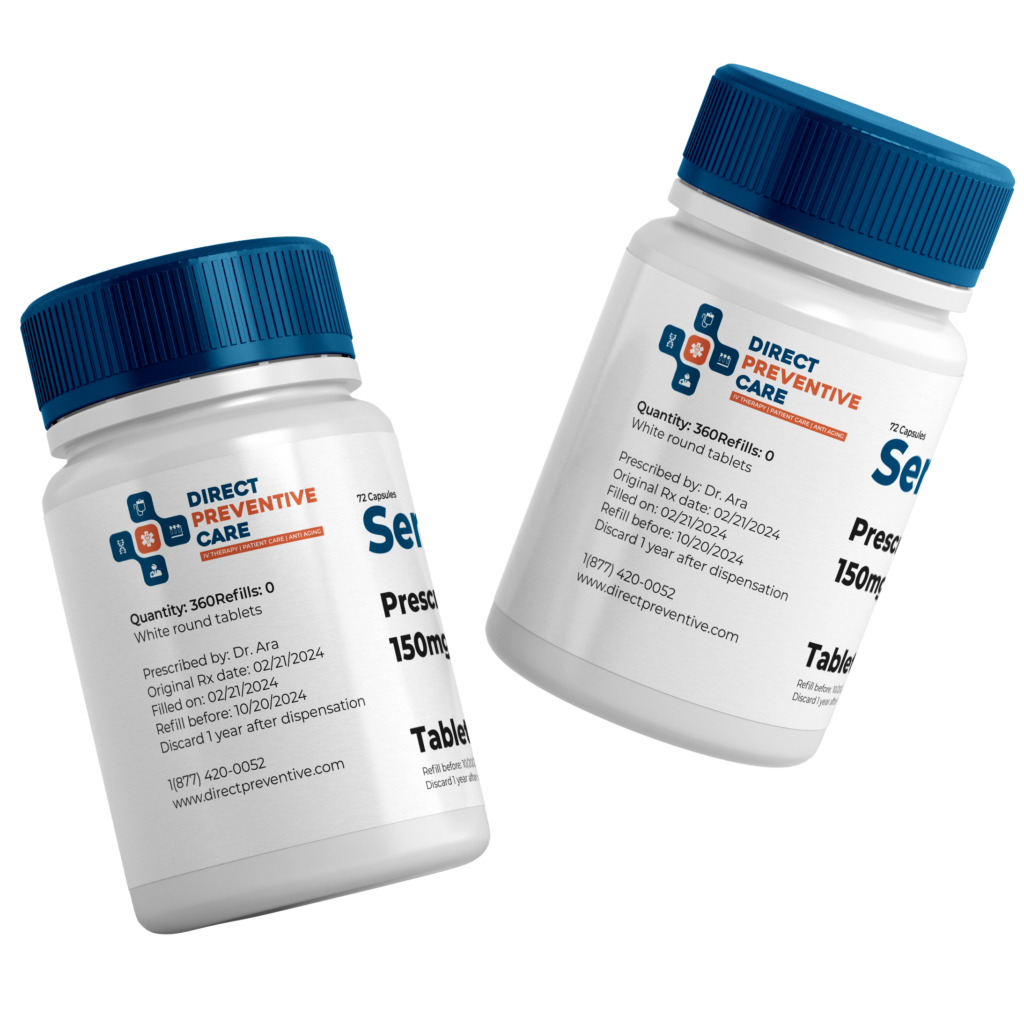Important Safety Information for
Semaglutide Injection

What is Semaglutide Used For?
Semaglutide is a glucagon-like peptide-1 (GLP-1) receptor agonist used for chronic weight management in conjunction with a reduced-calorie diet and increased physical activity. It is prescribed for adults with an initial body mass index (BMI) of:
- 30 kg/m² or greater (classified as obese), or
- 27 kg/m² or greater (classified as overweight) in the presence of at least one weight-related comorbidity, such as hypertension, type 2 diabetes mellitus, or dyslipidemia.
Limitations of Use:
- Semaglutide should not be used in combination with other semaglutide-containing products or any other GLP-1 receptor agonist.
- The safety and efficacy of combining semaglutide with other weight loss products have not been established.
- Semaglutide has not been studied in patients with a history of pancreatitis.
- It should not be used by patients with type 1 diabetes mellitus.
Who Should Not Use Semaglutide?
- Anyone who has had a type of thyroid cancer known as medullary thyroid carcinoma (MTC) or who has an endocrine system condition called Multiple Endocrine Neoplasia syndrome type 2 (MEN 2).
- Individuals with a known allergic reaction to semaglutide or any of its components.
How Should Semaglutide Be Administered?
Semaglutide is administered via subcutaneous injection once a week, on the same day each week, and can be taken with or without food. It can be injected in the stomach, thigh, or upper arm. For specific dosing instructions, consult the treatment plan provided by your Ro-affiliated provider.
What Should I Tell My DPC-affiliated Provider Before Using Semaglutide?
Inform your provider about:
- All medications you are currently taking, including prescription and over-the-counter medicines, vitamins, and herbal and dietary supplements.
- Any past medical history of conditions like type 1 or type 2 diabetes, thyroid cancer, pancreatitis, kidney disease, diabetic retinopathy, depression, suicidal thoughts or behavior, or ileus.
What Are the Most Serious Side Effects to Monitor For?
- Thyroid C-Cell Tumors: There is evidence from animal studies that semaglutide can increase the risk of thyroid C-cell tumors, including MTC.
- Acute Pancreatitis: Watch for severe abdominal pain that doesn’t go away, which may radiate to the back, and may include vomiting.
- Acute Gallbladder Disease: Symptoms include pain in your upper stomach area, jaundice, fever, or clay-colored stools.
- Low Blood Sugar (Hypoglycemia): Especially for those taking other glucose-lowering medications, be alert for symptoms like dizziness, blurred vision, mood changes, sweating, or a fast heartbeat.
- Acute Kidney Injury: Nausea, vomiting, and diarrhea can lead to dehydration which may worsen kidney function.
- Serious Allergic Reactions: Symptoms can include swelling of the face, lips, tongue or throat, severe rash, itching, very rapid heartbeat, difficulty breathing or swallowing, fainting, or feeling dizzy.
- Diabetic Retinopathy Complications: If you have type 2 diabetes and experience vision changes, contact your provider.
- Increase in Heart Rate: Monitor for a racing heartbeat while at rest.
- Suicidal Behavior and Ideation: Pay attention to any sudden changes in mood, behaviors, thoughts, or feelings.
Common Side Effects of Semaglutide:
Nausea, diarrhea, vomiting, constipation, abdominal pain, headache, fatigue, dyspepsia, dizziness, abdominal distension, eructation, hypoglycemia (in patients with type 2 diabetes), flatulence, gastroenteritis, gastroesophageal reflux disease..
Reporting Side Effects:
You are encouraged to report negative side effects of prescription drugs to the FDA’s MedWatch at 1-800-FDA-1088 or visit www.fda.gov/medwatch.
Note:
This summary is not exhaustive. Please consult the full Consumer Medical Information for comprehensive safety information.

